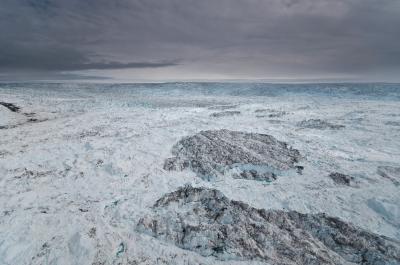We're open daily! View holiday hours
Science News
Recent Climate Change Studies
May 4, 2012

From glaciers to plants to ocean salinity—how is the Earth’s climate changing? How will it change? Many researchers are trying to answer these questions to prepare for the future. We’ll highlight a few recent studies and headlines here.
University of Washington researcher Ian Joughin has a paper in Science today about the varying rates at which Greenland’s glaciers are traveling. The faster the glaciers move, the more ice and meltwater they release into the ocean. While previous studies have looked at specific glaciers, this current study looks at many glaciers.
“We can’t look at one glacier for 100 years, but we can look at 200 glaciers for 10 years and get some idea of what they’re doing,” Joughin says. He and his colleagues found that the glaciers’ speed varied (some sped up, some slowed down), but on average the speeds increased by 28 percent in the northwest and 32 percent in the southeast during the decade. With this information, researchers are trying to predict how much the glaciers will melt and sea level will rise in future decades.
For more info, check out the story on NPR.
A huge study of plants, published this week in Nature, found that species are leafing and flowering even sooner in nature than in global warming experiments. The study included 1,643 species on four continents, with contributing scientists from 22 institutions. Scientific American reports that:
For every 1-degree-Celsius rise in temperature in an experiment, the rate of flowering and leafing would advance from 1 to 1.6 days. In nature, advances were four times faster for leafing and more than eight times faster for flowering.
“These results are important because we rely heavily on these experiments to predict what will happen to communities and ecosystems in the future,” says Ben Cook, a climatologist at the NASA Goddard Institute for Space Studies and Columbia University, who helped bring together the research team. Researchers are hoping that more standardized experimentation will bring the lab closer to true nature.
Last week, another paper in Science demonstrated the trends of ocean salinity since 1950. Paul Durack, of Lawrence Livermore National Laboratory, and his team used measurements from the Argo network of over 3,000 robot buoys. Science News offers the results:
More water moved into and out of the atmosphere in 2000 than in 1950, making saltier parts of the world’s oceans saltier and fresher waters less salty… A warming planet may be to blame.
This could translate to terrestrial areas, too, the researchers say, with more droughts and floods as temperatures rise. The New York Times has more details.
And a few final tidbits/links… Ten-year drought over in Australia (for now), allergies increase with climate change and climate studies on clouds, caves, lakes and trees.
Image: Ian Joughin/University of Washington